An early 16th century embroidered Steuchlein (headdress), inspired by the Portrait of a 34 year old Woman by Hans Holbein the Elder.
This embroidered Steuchlein was my first foray into making German middle class linen headwear with the right profile. Up the this point, I had tied a white linen cloth around my head and folded it at the back, but without the distinctive padded roll beneath.
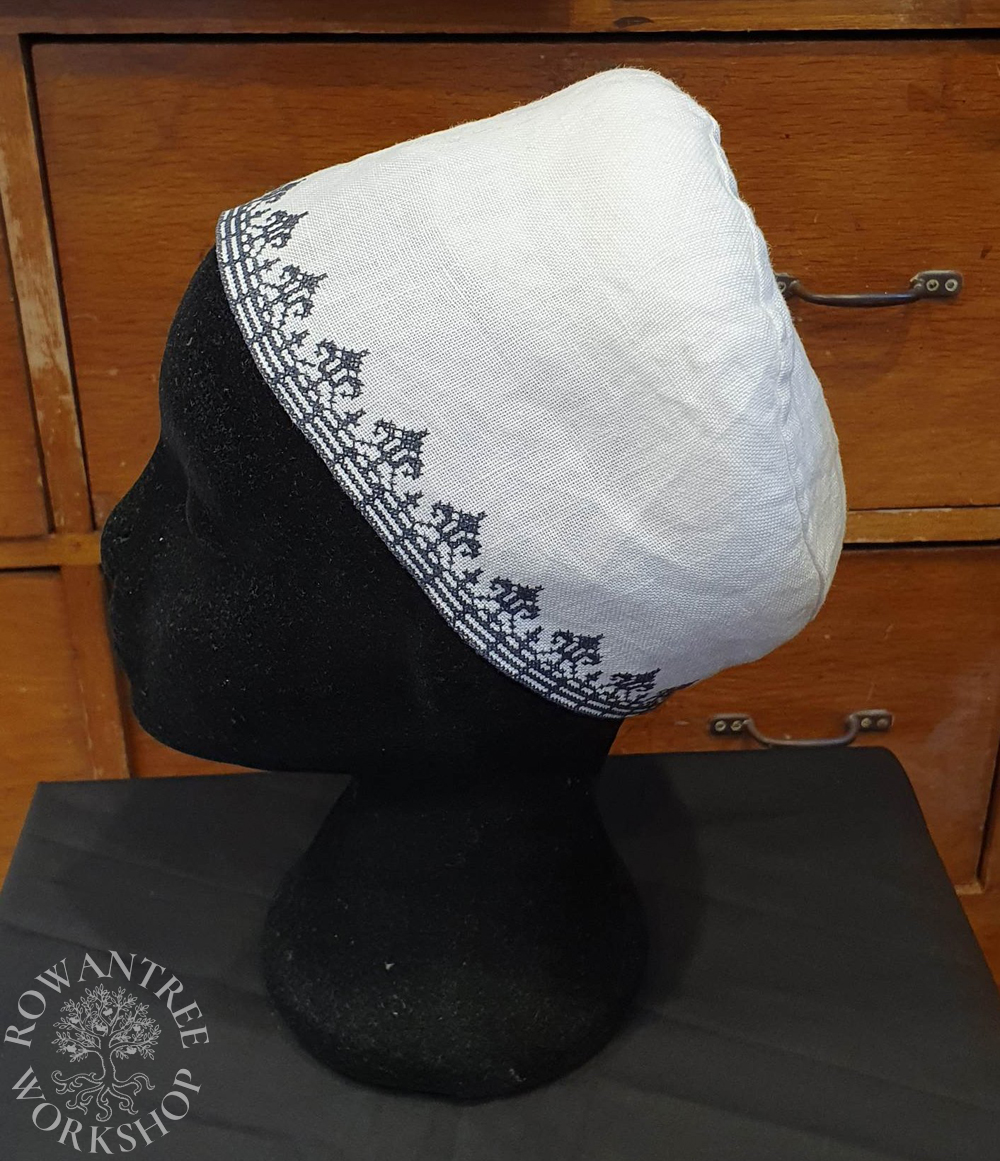
Once I had made a Rock based on this specific Holbein portrait, I wanted the embroidered Steuchlein to complete the look.
Research and Design
There are many examples of embroidered middle class headwear from early 16th century Germany, usually in the form of a band along the front edge, framing the face. Textiler Hausrat (1990) notes that most such women had both plain and decorated versions to wear, with bands of gold or embroidery.
Many of the images show a second, transparent veil worn over the top, sometimes with its own decorated edge. Decorated headwear is associated with Burgher (middle class) married women – the sumptuary laws of the early 16th century forbade the use of decorated veils by Bauer (farmer) women.
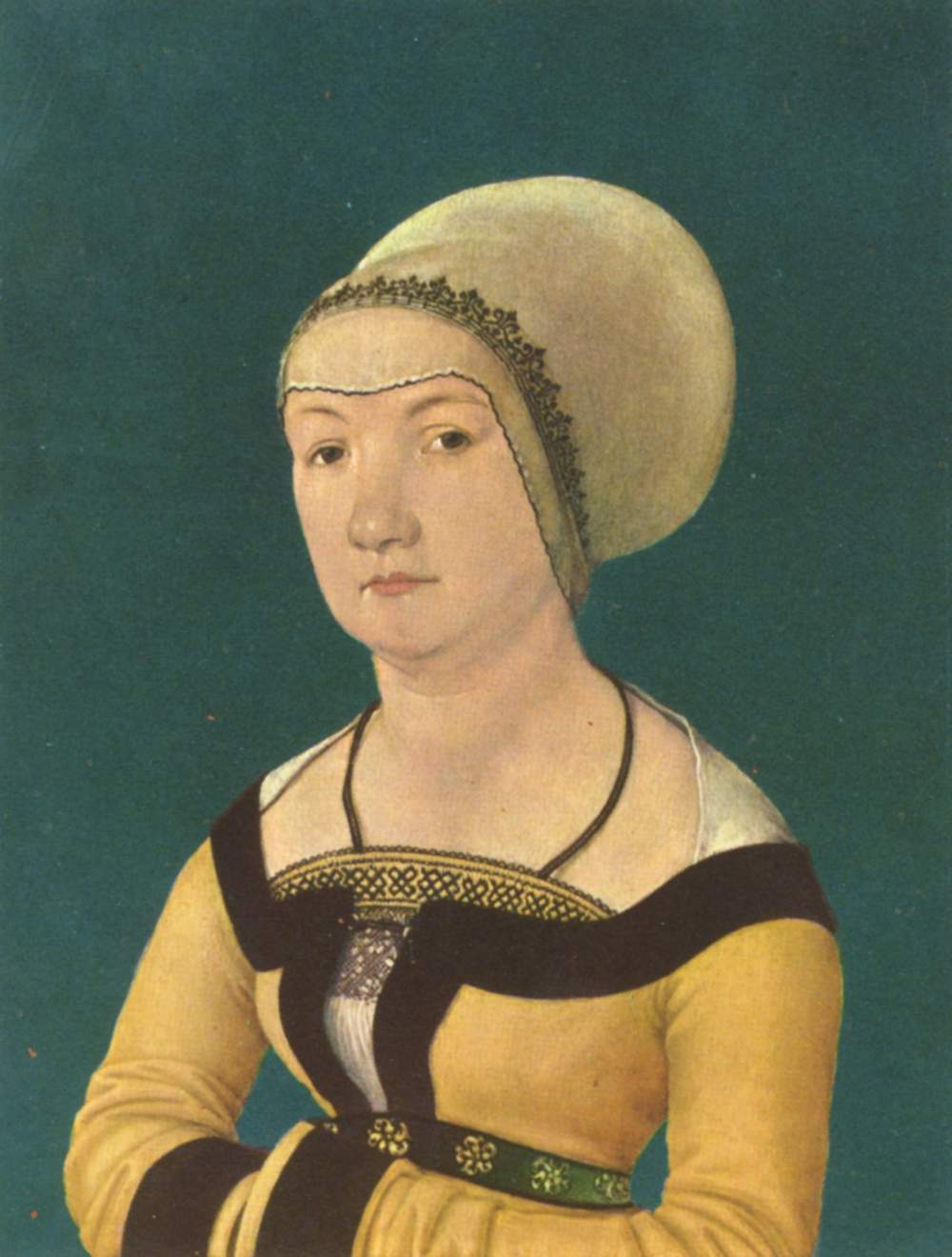
Source: Wikimedia
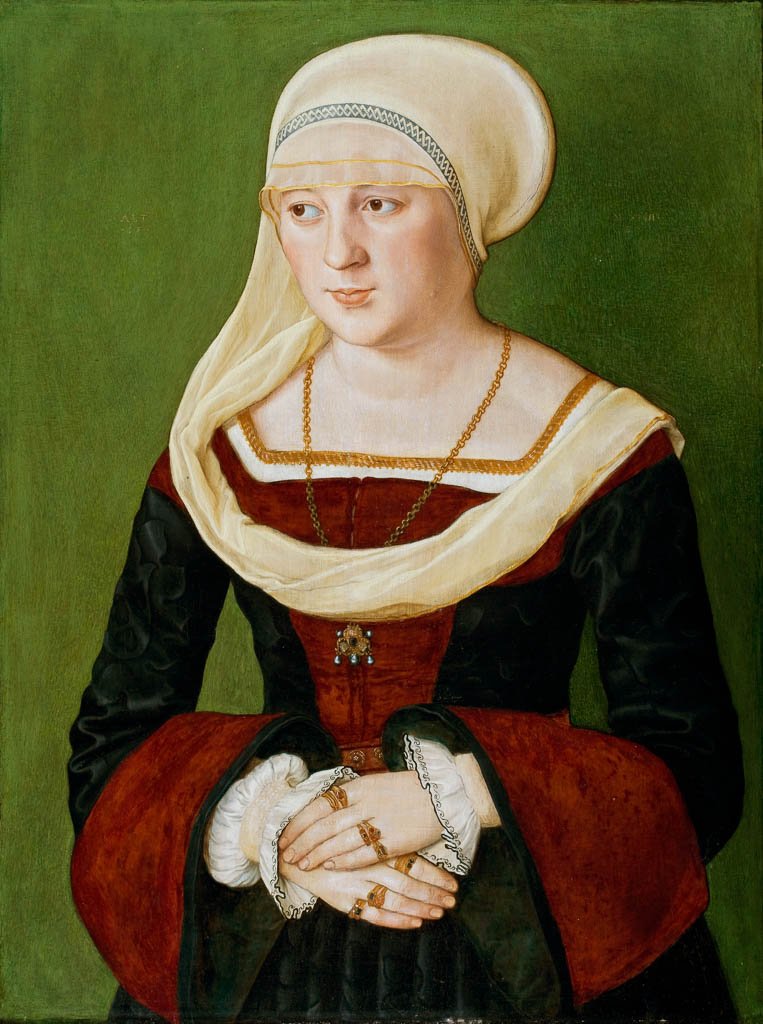
Source: The Fitzwilliam Museum
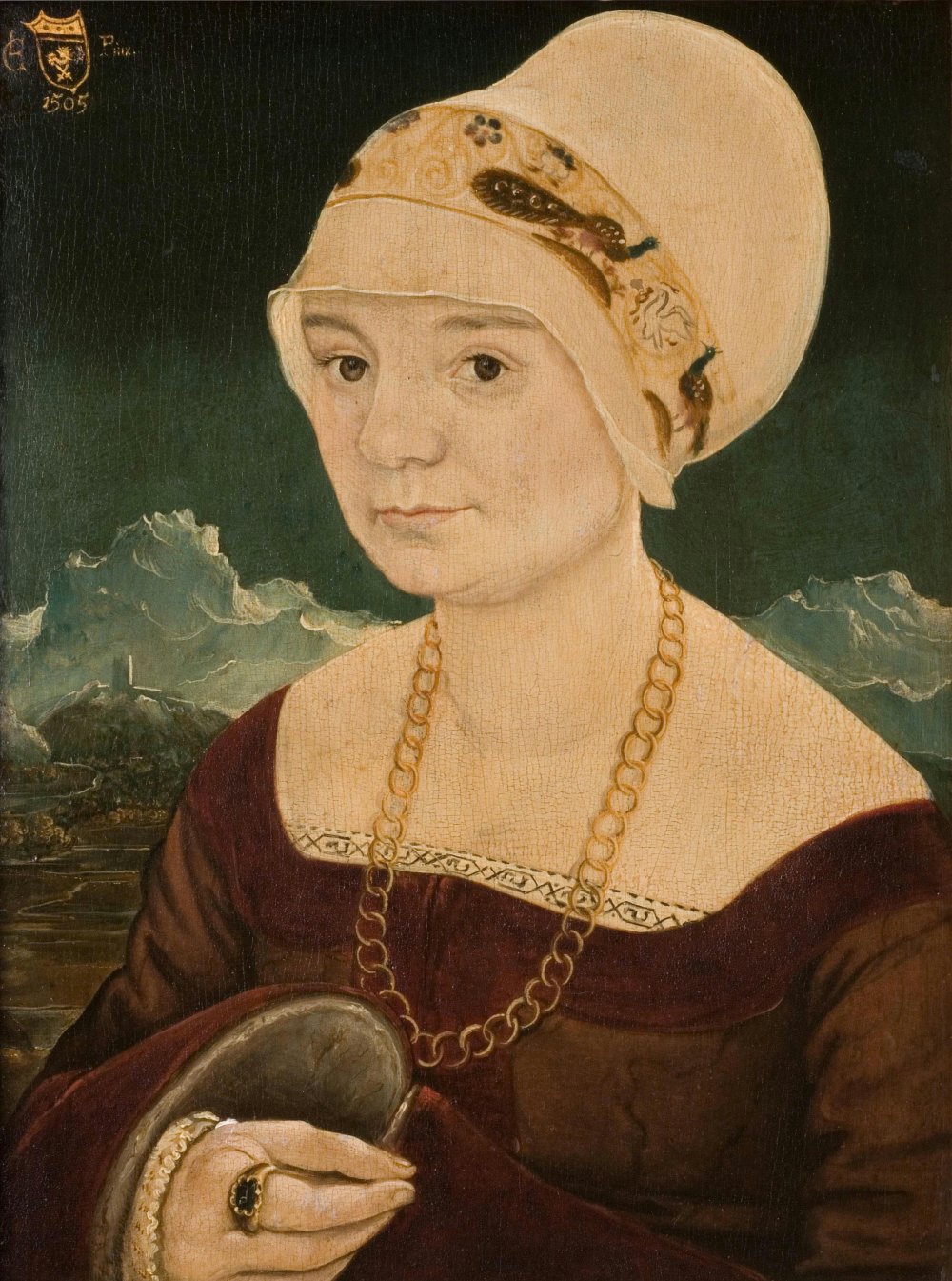
Source: Philadelphia Museum of Art
This was years before I understood how the Steuchlein layers were constructed, but it was clear there was a padded roll making the distinctive shape at the back. I could not find images of the back in my small collection, but I had photographed some sculptures in the Kunsthistorisches Museum in 1996, which showed a smooth back, so I went with that (in retrospect, the first one is actually a Goldhaub!).
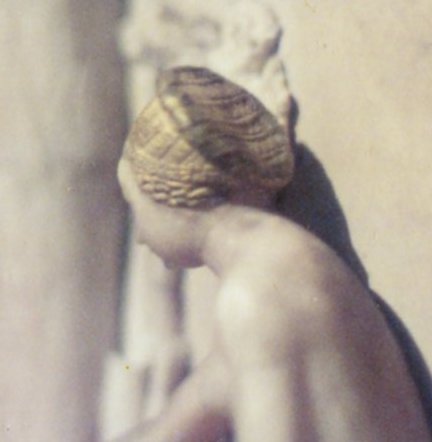
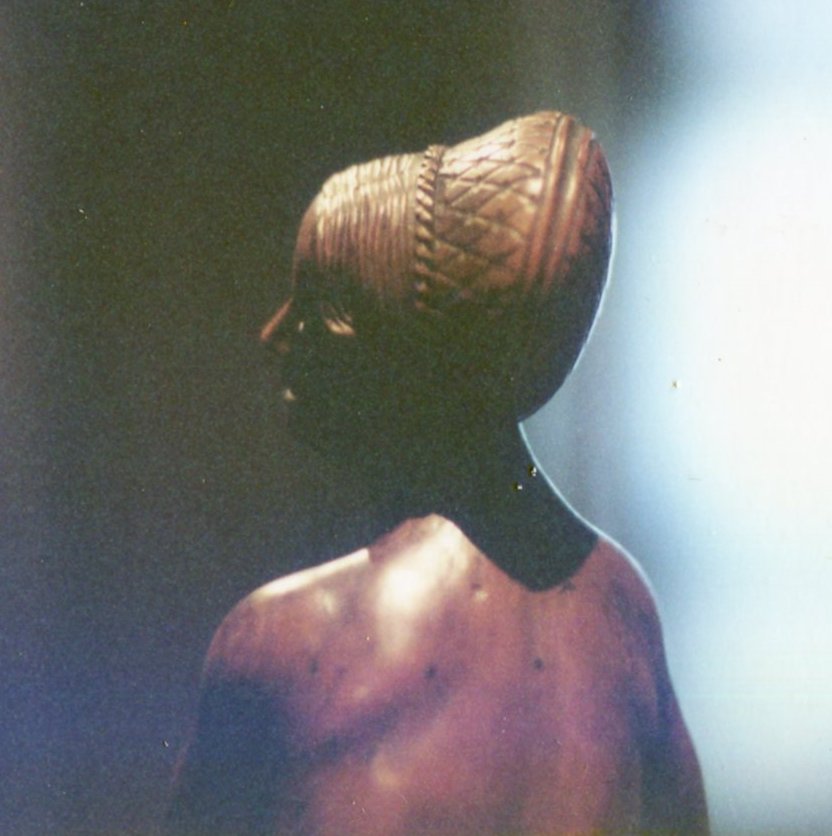
I wanted to reproduce the embroidery exactly, so I charted the pattern as best I could from a blown-up copy of a small book image. Many years later, I can see the clear resemblance to patterns in the 16th century German modelbooks, such as this simpler example from Schönsperger.
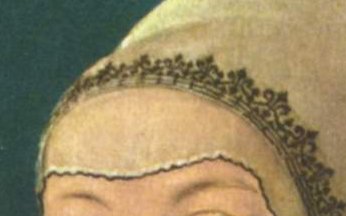

Source: The Met
Construction
Since I have very short hair, I made a simple padded roll attached to a cap, with a drawstring to keep it on my head. I put this on a headform and drafted a pattern by draping and pinning.
I worked the embroidery on a strip of 32 count linen, in cross stitch using Madeira black silk thread, worked in the hand. I trimmed it to size and cut the top in the same linen then stitched them in a run-and-fell seam with linen thread to form an unlined cap. I turned the hem and stitched it to the back of the embroidery.


I also made a veil in silk gauze to go over the top, but it got damaged and I did not have enough gauze to replace it. Since the two sculptures did not show the veil, and it was not quite fine enough to show the embroidery, I then wore it without.
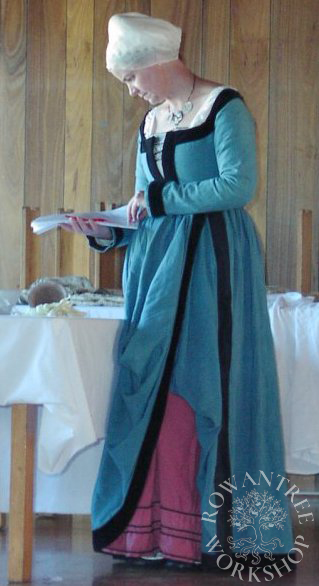
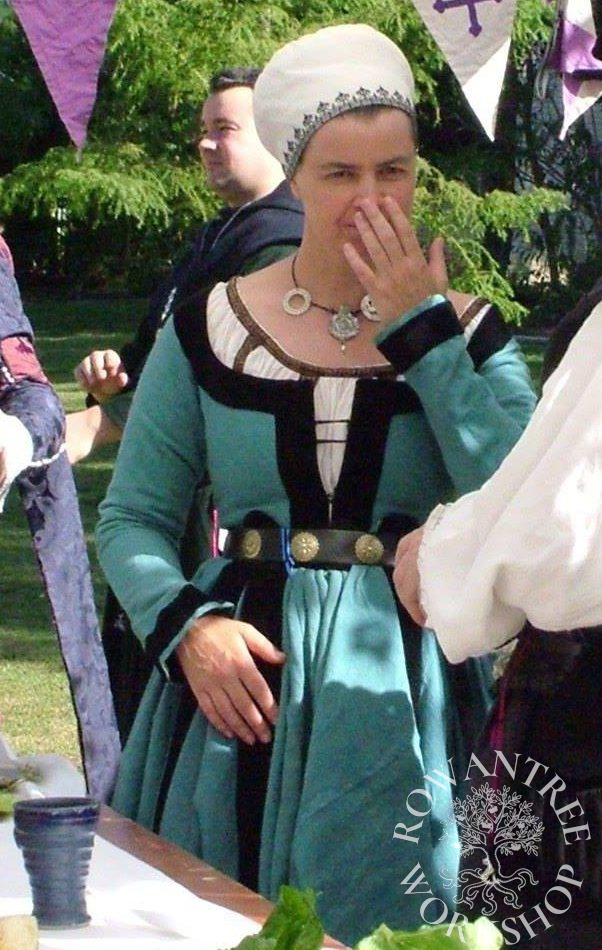
Afterthoughts
At the time I worked this in simple cross-stitch. These days I would use long-armed cross-stitch – a more appropriate technique for early 16th century German embroidery.
I still love the design, but once I moved to a better (and larger) Steuchlein construction, my little linen cap did not work any more, so I have not worn it for many years. Perhaps it’s time to look at whether I can recycle it into something I can wear again.
Some years later, I made another embroidered Steuchlein, with a different design.

